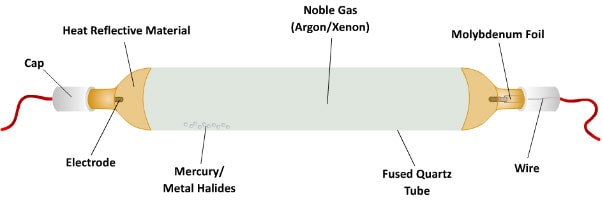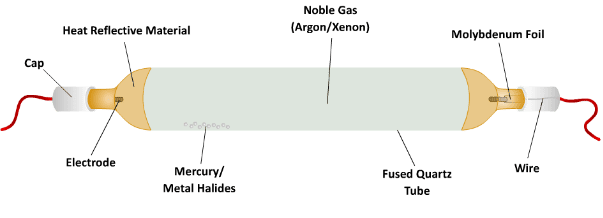
What Is A UV Lamp And How Does It Work?
A UV lamp is a lamp specifically designed to emit light at the Ultraviolet Wavelength. The lamp is created using a quartz body and contains a small amount of mercury, either in a free state within the tube or imbedded within the lamp’s surface. There are many different types of UV lamps which produce different wavelengths of UV including UV-A, UV-B and UV-C.
The Basics Of A UV Lamp
How does a UV lamp start?
UV lamps contain a small amount of mercury, when a high voltage is applied to the electrodes, the starting gas inside the lamp is ionised and the temperature increases, this excites the mercury and creates a high temperature plasma arc which emits UV light.
Ideal Operating Temperatures
- Temperature ≪650 °C: metals/halides condense
- Temperature ≫850 °C: tube stability compromised
- Optimum Temperature:
- 700 °C for mercury lamps
- 800 °C for metal-halide lamps
If a lamp becomes swollen due to overheating, this will reduce the running voltage of the lamp. Swollen lamps will also not be effective at curing.



